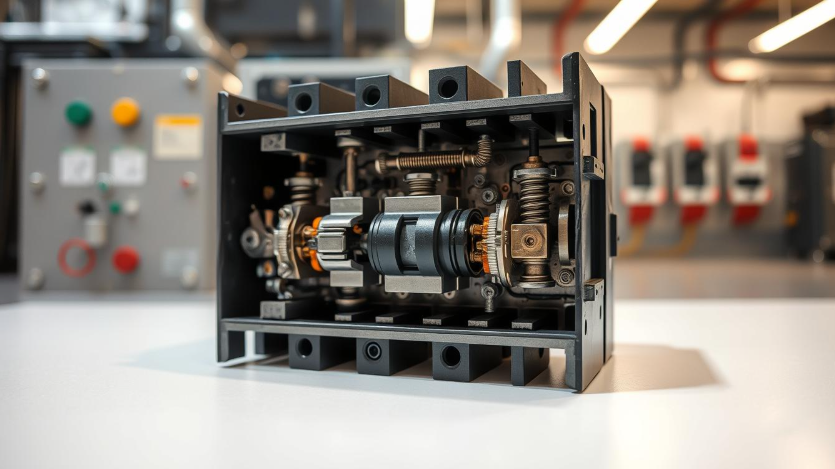Maintaining your vehicle’s brake system is crucial for safety on the road. One of the critical aspects of brake maintenance is knowing when to replace your brake pads. Worn-out brake pads can lead to reduced stopping power, increased risk of accidents, and more costly repairs down the line.
Understanding the brake pad replacement frequency is essential for vehicle owners. Factors such as driving habits, road conditions, and vehicle type all play a role in determining how often brake pads need to be changed. In this article, we’ll explore these factors and provide expert advice on maintaining your brake system.
Key Takeaways
- Understanding the importance of brake pad maintenance
- Factors influencing brake pad replacement frequency
- Signs indicating the need for brake pad replacement
- Expert tips for prolonging brake pad life
- Best practices for brake pad inspection and replacement

How Often Brake Pads Should Be Changed: General Guidelines
Brake pad replacement is an essential aspect of car maintenance that varies based on several factors. Understanding these factors can help you maintain your vehicle’s braking performance and ensure safety on the road.
Average Lifespan of Different Brake Pad Types
The lifespan of brake pads can vary significantly depending on their type and material. Organic brake pads, for instance, tend to wear out faster than their semi-metallic counterparts, typically lasting between 30,000 to 50,000 miles. Semi-metallic brake pads, on the other hand, can last longer, often up to 60,000 miles or more, due to their durability and heat resistance.
In contrast, low-metallic brake pads offer a balance between the two, providing a decent lifespan while maintaining good braking performance. The choice of brake pad type often depends on driving habits, vehicle type, and personal preference regarding braking feel and noise.
Manufacturer Recommended Service Intervals
Vehicle manufacturers typically provide recommended service intervals for brake pad replacement in the owner’s manual. These recommendations are based on the vehicle’s design, intended use, and testing under various conditions. For example, some vehicles may require brake pad inspection every 10,000 miles and replacement every 30,000 to 50,000 miles.
- Check your owner’s manual for specific guidance on brake pad replacement.
- Consider your driving conditions; extreme temperatures, frequent city driving, or towing may necessitate more frequent brake pad replacements.
- Regular inspections can help identify worn brake pads before they become a safety issue.
By following the manufacturer’s recommended service intervals and being mindful of your vehicle’s condition, you can ensure your brake pads are replaced at the appropriate time, maintaining your vehicle’s safety and performance.
Signs That Indicate Your Brake Pads Need Replacement
Recognizing the signs that indicate worn-out brake pads can save you from potential accidents and costly repairs. Being aware of the condition of your brake pads is crucial for maintaining your vehicle’s safety and performance on the road.
Visual Indicators and Wear Measurements
One of the most straightforward ways to determine if your brake pads need replacement is by visually inspecting them. Most brake pads have a wear indicator – a small metal tab that makes contact with the brake rotor when the pad wears down to a certain level. If you notice this indicator is touching or very close to the rotor, it’s a clear sign that your brake pads are worn out.
Wear measurements are another critical factor. Brake pads typically have a minimum thickness specification. If the pad’s thickness is at or below this minimum, replacement is necessary. It’s recommended to consult your vehicle’s manual or speak with a professional mechanic to understand the specific wear limits for your brake pads.
Warning Sounds: Squealing and Grinding
Unusual sounds when applying the brakes are often indicative of worn-out brake pads. A squealing noise can be a warning sign that the brake pads are wearing thin. This noise is usually produced by the wear indicator coming into contact with the brake rotor. On the other hand, a grinding sound is a more serious indication that the brake pads have worn down completely, and the brake rotors are now in direct contact with the brake calipers, potentially causing damage.
Performance Issues While Braking
If you notice any of the following performance issues, it may be a sign that your brake pads need to be replaced: a spongy brake pedal, vibrations when braking, or a longer stopping distance than usual. These symptoms can indicate worn-out brake pads or other issues within the braking system.
| Signs | Description | Action Required |
|---|---|---|
| Visual Wear Indicators | The metal tab on the brake pad makes contact with the rotor. | Replace brake pads |
| Squealing Noise | High-pitched sound when applying brakes. | Inspect and replace brake pads if necessary |
| Grinding Sound | Metal-on-metal sound indicating severe wear. | Immediate replacement of brake pads and inspection of rotors |
| Spongy Brake Pedal or Vibrations | Soft or vibrating brake pedal when pressed. | Inspect brake system, potentially replace brake pads or other components |
Factors Affecting Brake Pad Wear and Replacement Frequency
Understanding the factors that influence brake pad wear is crucial for determining the optimal replacement interval. Brake pads are a critical component of a vehicle’s braking system, and their wear can be affected by a variety of factors.
Driving Habits and Environmental Conditions
Driving habits play a significant role in determining brake pad wear. Aggressive driving, such as frequent hard braking or riding the brakes, can significantly reduce the lifespan of brake pads. Similarly, driving in hilly or mountainous terrain can cause brake pads to wear down faster due to the increased frequency of braking.
Environmental conditions also impact brake pad wear. For example, driving in areas with high levels of air pollution or exposure to salted roads during winter can accelerate corrosion and wear on brake components. Additionally, extreme temperatures can affect the performance and longevity of brake pads.
Vehicle Type, Weight, and Brake System Design
The type of vehicle, its weight, and the design of its brake system are also crucial factors in determining brake pad wear. Heavier vehicles, such as trucks or SUVs, tend to wear out brake pads faster due to the increased stress on the braking system. The design of the brake system, including the type of brake pads used and the rotor size, can also impact wear rates.
Furthermore, vehicles with advanced brake systems, such as anti-lock braking systems (ABS), may have different wear patterns compared to those without such systems. Understanding these differences is essential for predicting when brake pads may need to be replaced.
Brake Pad Material and Quality Differences
The material and quality of brake pads themselves are significant factors in their wear and replacement frequency. Brake pads are made from a variety of materials, including organic, semi-metallic, and ceramic compounds, each with its own wear characteristics and performance attributes.
High-quality brake pads, while potentially more expensive upfront, can offer longer lifespan and better performance, ultimately affecting the optimal brake pad replacement interval. It’s essential to choose brake pads that are compatible with your vehicle’s specifications and driving conditions to ensure optimal braking performance and safety.
By considering these factors, vehicle owners can better understand how often their brake pads should be changed, ensuring their vehicle’s braking system operates effectively and safely.
Conclusion
The importance of maintaining a proper brake maintenance schedule cannot be overstated. Timely replacement of brake pads is crucial for ensuring vehicle safety and performance. As discussed, the frequency of brake pad replacement depends on various factors, including driving habits, environmental conditions, vehicle type, and brake pad material.
To stay on top of brake maintenance, it’s essential to be aware of the signs indicating worn-out brake pads, such as visual wear, squealing sounds, and performance issues. By understanding when to change brake pads, drivers can avoid more costly repairs down the line and ensure their vehicle remains safe to drive.
By following the manufacturer’s recommended service intervals and being mindful of the factors that affect brake pad wear, vehicle owners can create a personalized brake maintenance schedule. Regular checks and timely replacements will help maintain optimal braking performance and prevent potential safety hazards.
For optimal vehicle safety and performance, staying informed about brake pad maintenance is key. By doing so, drivers can enjoy a smoother, safer driving experience.
FAQ
How often should I check my brake pads?
It’s recommended to inspect your brake pads every 10,000 to 15,000 miles, or as specified by your vehicle’s manufacturer. Regular checks can help identify worn-out brake pads before they cause any issues.
What are the signs that my brake pads need to be replaced?
Common indicators include squealing or grinding noises when you press the brake pedal, a vibrating or pulsating brake pedal, or if your vehicle pulls to one side when braking. Visual inspections can also reveal worn-out brake pads.
Can I replace my brake pads myself, or should I consult a professional?
While it’s possible to replace brake pads yourself if you have the necessary mechanical skills and experience, it’s often recommended to consult a professional mechanic to ensure the job is done correctly and safely.
How do driving habits affect brake pad wear?
Aggressive driving habits, such as frequent hard braking or riding the brakes, can significantly reduce the lifespan of your brake pads. Smooth and gradual braking can help extend their lifespan.
Are there different types of brake pads, and do they have different lifespans?
Yes, there are various types of brake pads, including organic, semi-metallic, and ceramic brake pads, each with its own characteristics and lifespan. Generally, ceramic brake pads last longer than organic ones, while semi-metallic brake pads fall somewhere in between.
What is the average lifespan of brake pads?
The average lifespan of brake pads varies depending on the type, driving conditions, and vehicle specifications. Typically, brake pads can last anywhere from 30,000 to 50,000 miles, but some may need to be replaced more frequently.
Can environmental conditions impact brake pad wear?
Yes, environmental factors such as extreme temperatures, exposure to salt or chemicals, and driving in hilly or mountainous terrain can all impact brake pad wear and potentially reduce their lifespan.
How do I know if my brake pads are worn out?
You can check your brake pads visually by looking through the wheel spokes or by using a brake pad wear indicator. Many modern vehicles are also equipped with electronic brake pad wear sensors that alert you when the pads need replacement.




